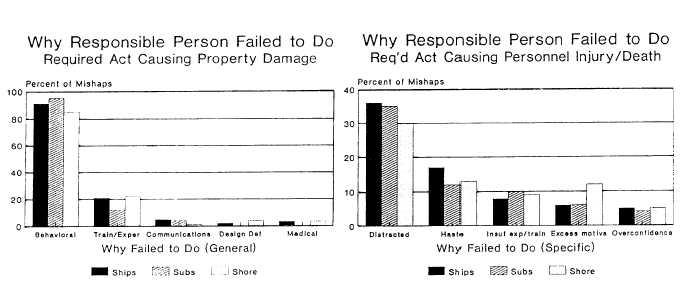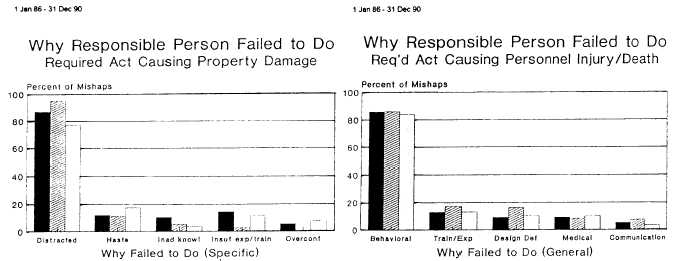| |
Figure 1-1.—Human error mishap statistics—Continued.
operating procedures. Human error is cited as the most
frequent cause of Navy mishaps (fig. 1-1).
How do we keep personnel and working conditions
as safe as possible? We include safety rules in our
everyday workplace. One purpose of safety rules is to
remind people of the inherent dangers of their work.
Your job as a safety supervisor will require you to
identify hazards and apply appropriate or required
safety rules. Training personnel to observe safety
precautions helps them avoid preventable mishaps,
maintain a safe work environment, and conduct
mishap-free operations. Operating procedures and work
methods that include mishap prevention keep personnel
from being needlessly exposed to injury or occupational
health hazards. An effective safety program depends on
worker cooperation and supervisor involvement.
THE NAVAL SAFETY CENTER
The Navy recognized the need for centralized
management of all safety efforts many years ago. A
single command to deal with all Navy safety ashore and
afloat evolved from the original Naval Aviation Safety
Center. With the passage of the Occupational Safety and
Health Act (OSHA) in 1970, increased emphasis on
shore and shipboard safety demanded expansion and
increased awareness.
Commander, Naval Safety Center (COMNAV-
SAFECEN), advises and assists the CNO in promoting,
monitoring, and evaluating the Department of the Navy
safety program. The commander advises and assists the
CNO in determining safety program goals and policies.
COMNAVSAFECEN also has the responsibility of
1-5
|


